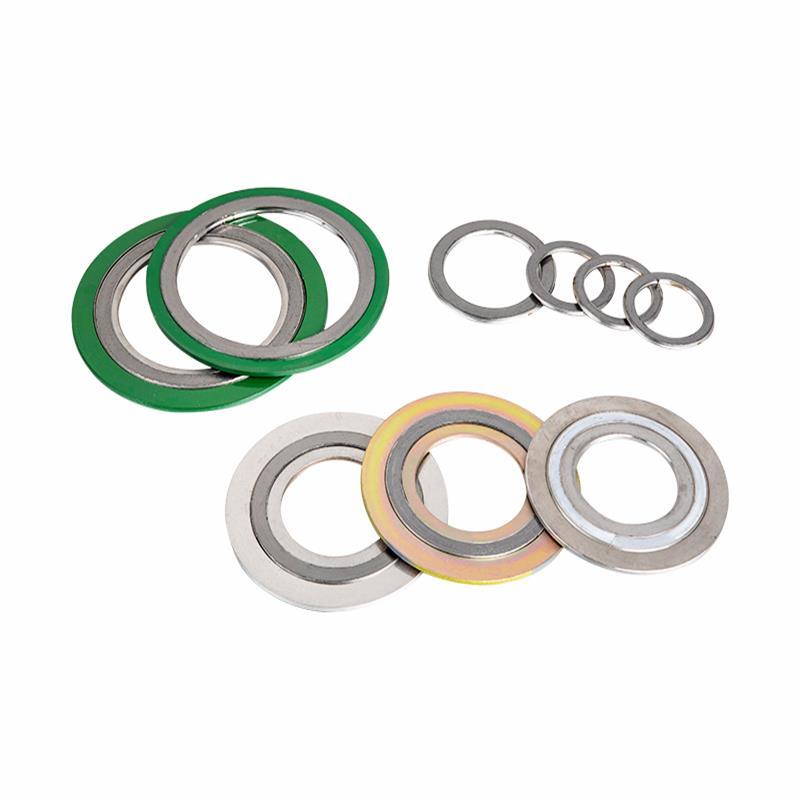Non-metallic gaskets are usually composite sheets used for flat and raised face flanges in low-pressure applications. Non-metallic gaskets are made of aramid fiber, glass fiber, elastomer, Teflon® (PTFE), graphite, etc. The full gasket type is suitable for flat flanges. The flat ring gasket type is suitable for raised face flanges.
ASME B16.21 covers the types, dimensions, materials, dimensions, dimensional tolerances, and markings of non-metallic flat washers.
Semi-metallic gaskets are composite materials of metal and non-metal materials. Metal is designed to provide strength and flexibility, while non-metallic parts provide consistency and tightness. Commonly used semi-metal gaskets include spiral wound and cam profiles, as well as various metal-reinforced graphite gaskets.
Semi-metallic design is used in almost all working conditions and high temperature and high-pressure applications, for raised face flanges, male and female flanges, and tongue and groove flanges.
ASME B16.20 covers the materials, dimensions, dimensional tolerances, and markings of metal and semi-metal gaskets.
Metal Jacketed Gaskets are made of one metal or multiple metals in the required shape and size. The frequently used Metal Jacketed Gaskets are ring-type joint gaskets (RTJ). They are always applied to special matching flanges to ensure a good and reliable seal through the correct selection of profiles and materials.
The ring joint gasket is designed to seal by "initial line contact" or by the wedging action between the mating flange and the gasket. The bolt force exerts pressure on the sealing interface, and the "softer" metal of the gasket flows into the fine structure of the harder flange material, thereby forming a very tight and efficient seal.
ASME B16.20 covers the materials, dimensions, dimensional tolerances, and markings of metal and semi-metal gaskets.
Spiral Wound Gaskets For Sale is also our product, welcome to consult and purchase.



